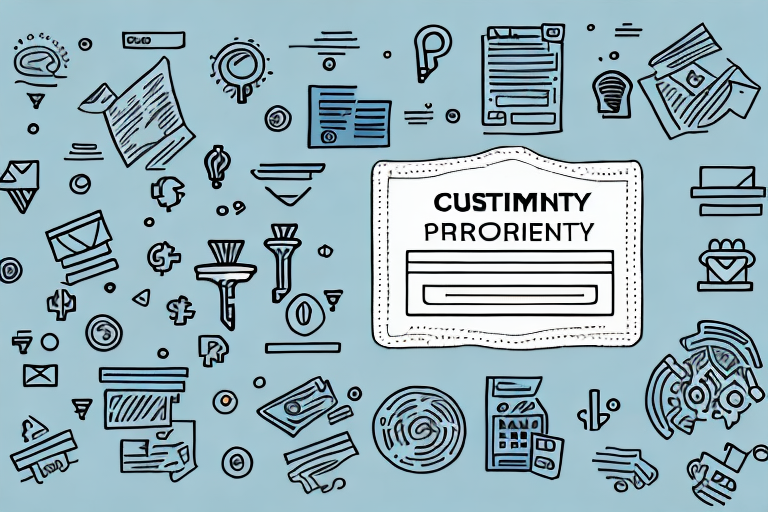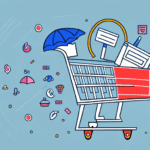Setting Up and Managing Customer Loyalty Programs: A Comprehensive Guide
In today's highly competitive business landscape, customer loyalty programs have become essential for organizations aiming to retain their existing customer base and attract new customers. A well-designed loyalty program can help a business stand out from the competition, increase customer engagement and loyalty, and ultimately drive revenue growth. This guide provides a step-by-step approach to setting up and managing a customer loyalty program that meets the needs of both your business and your customers.
Why Customer Loyalty Programs Are Essential for Your Business
Understanding the importance of customer loyalty programs is crucial for designing a successful strategy. These programs have been proven to:
- Increase Customer Retention: Loyal customers are more likely to make repeat purchases, reducing churn rates. According to a study by Harvard Business Review, increasing customer retention by 5% can lead to an increase in profits of 25% to 95%.
- Boost Customer Lifetime Value: Engaged customers tend to spend more over time. Implementing a loyalty program can enhance the long-term value each customer brings.
- Enhance Brand Advocacy: Satisfied loyalty program members are more likely to recommend your products or services to others, providing valuable word-of-mouth marketing.
- Gather Valuable Customer Data: Loyalty programs provide insights into customer preferences and behaviors, enabling personalized marketing and product offerings.
Additionally, in a crowded market, a distinctive loyalty program can differentiate your brand by offering exclusive rewards and creating a sense of community among customers.
Types of Customer Loyalty Programs
Selecting the right type of loyalty program depends on your business goals and target audience. Common types include:
- Points-Based Programs: Customers earn points for each purchase, which can be redeemed for rewards. For example, Sephora's Beauty Insider allows customers to accumulate points for discounts and exclusive products.
- Tiered Programs: Customers achieve different status levels based on their spending or engagement, unlocking additional benefits at higher tiers. The Ulta Ultamate Rewards program is a notable example.
- Paid Programs: Customers pay a fee to join and receive premium benefits. Services like Amazon Prime offer exclusive shipping, streaming, and other perks for a yearly fee.
- Cashback Programs: Customers receive a percentage of their purchases back as cash or store credit, providing immediate tangible rewards.
Choosing the right program type involves understanding your customers' preferences and aligning the rewards with what they value most.
Identifying Your Target Audience and Their Needs
Designing an effective loyalty program starts with a deep understanding of your target audience. Consider the following:
Demographic Analysis
Identify the age, gender, income level, and other demographic factors of your customer base. For instance, a program targeting millennials may emphasize mobile and digital features, while one aimed at older demographics might prioritize straightforward rewards.
Behavioral Insights
Analyze purchasing behavior, frequency, and spending patterns. Tools like CRM systems can help gather and interpret this data, enabling personalized rewards that resonate with different customer segments.
Evolving Customer Needs
Customer preferences can change over time. Regularly update your program based on feedback and evolving trends to ensure it remains relevant and appealing.
Creating a Reward System That Works for Your Customers
The reward system is the core of any loyalty program. It should be attractive and aligned with what your customers value:
Valuable Rewards
Offer rewards that are meaningful to your customers. For example, a retail store might provide discounts or exclusive products, while a service-based business could offer free consultations or premium services.
Easy Redemption
Simplify the process of earning and redeeming rewards to enhance user experience. Complicated systems can deter participation.
Regular Evaluation
Continuously assess the effectiveness of your rewards through customer feedback and program metrics. Adjust the offerings to keep the program fresh and engaging.
According to a survey by Forbes, personalized rewards significantly increase customer satisfaction and loyalty.
Designing an Engaging and User-Friendly Program
The design of your loyalty program plays a pivotal role in its success:
User-Friendly Interface
Create an intuitive platform where customers can easily navigate, track their progress, and redeem rewards. Mobile-friendly designs are crucial, given the increasing use of smartphones for online activities.
Personalization
Leverage customer data to offer personalized rewards and experiences. Tailored offers make customers feel valued and understood, increasing their engagement with the program.
Gamification
Incorporate gamification elements like badges, challenges, and leaderboards to make the program more engaging and fun. This can enhance participation and retention.
Clear Communication
Use clear and compelling language to explain the benefits and mechanics of the program. Transparency in how rewards are earned and redeemed builds trust.
Implementing and Managing Your Loyalty Program
Effective implementation and ongoing management are essential for sustaining a loyalty program:
Omnichannel Marketing
Promote your loyalty program across multiple channels, including email, social media, and in-store promotions, to maximize reach and enrollment.
Staff Training
Ensure that your staff are well-informed about the program details so they can assist customers effectively and encourage participation.
Data Analysis
Regularly analyze customer data to gain insights into program performance and customer behavior. Use this information to make data-driven decisions and refine the program.
Continuous Improvement
Solicit and act on customer feedback to continuously enhance the program. This could involve adding new rewards, adjusting the points system, or updating the user interface.
Measuring the Success of Your Customer Loyalty Program
To ensure your loyalty program is effective, establish key performance indicators (KPIs) and regularly monitor them:
- Enrollment Numbers: Track the number of customers joining the program to gauge its initial appeal.
- Engagement Rates: Measure how actively members are participating, such as frequency of purchases and reward redemptions.
- Customer Retention: Analyze changes in retention rates to assess the program's impact on customer loyalty.
- Customer Satisfaction: Use surveys and feedback tools to evaluate member satisfaction and identify areas for improvement.
According to a report by Gartner, businesses that effectively measure and adapt their loyalty programs see higher customer retention and increased revenues.
Strategies for Encouraging Customer Engagement and Retention
Maintaining high levels of customer engagement and retention requires proactive strategies:
Email Campaigns
Send personalized emails with exclusive offers, rewards updates, and program news to keep members informed and engaged.
Exclusive Promotions
Offer special promotions or limited-time rewards to incentivize continued participation and purchases.
Tiered Incentives
Provide additional benefits for customers who reach higher tiers, encouraging them to strive for greater engagement.
Community Building
Create a community around your loyalty program through social media groups, forums, or exclusive events, fostering a sense of belonging among members.
Addressing Common Challenges and Pitfalls in Loyalty Programs
While loyalty programs offer significant benefits, they can also present challenges:
- Program Complexity: Overly complicated rules can confuse customers and reduce participation. Keep the structure simple and transparent.
- Insufficient Rewards: Rewards that don't resonate with customers will fail to drive engagement. Ensure rewards are valuable and aligned with customer preferences.
- Lack of Personalization: Generic rewards may not appeal to all segments. Use data to tailor rewards to individual customer needs.
- Inconsistent Communication: Poor communication can lead to misunderstandings about how to earn and redeem rewards. Maintain clear and consistent messaging.
Address these challenges by regularly reviewing program performance, soliciting customer feedback, and making necessary adjustments to enhance the program's effectiveness.
Case Studies: Successful Examples of Customer Loyalty Programs
Examining successful loyalty programs can provide valuable insights and best practices:
Starbucks Rewards
Starbucks' program leverages mobile integration, allowing customers to earn stars with each purchase through their app. The program offers personalized rewards and exclusive offers, driving high engagement levels.
Sephora's Beauty Insider
Sephora's tiered program offers increasing benefits as customers ascend through tiers. The program also provides personalized product recommendations and exclusive access to new products.
Amazon Prime
Amazon Prime combines various benefits, including fast shipping, streaming services, and exclusive deals, offering substantial value that encourages long-term membership and loyalty.
Innovations in Customer Loyalty: Emerging Trends to Watch
Staying ahead of industry trends can enhance the effectiveness of your loyalty program:
Voice-Driven Loyalty Programs
Integrating voice technology allows customers to interact with loyalty programs through devices like smart speakers, offering a seamless and hands-free experience.
Augmented and Virtual Reality
AR and VR can create immersive experiences for loyalty program members, such as virtual product try-ons or interactive reward redemption.
Internet of Things (IoT) Integration
IoT devices can collect real-time data on customer behavior, enabling more personalized and timely rewards based on actual usage patterns.
Blockchain for Transparency
Blockchain technology can enhance the transparency and security of loyalty programs, ensuring that rewards are accurately tracked and redeemed.
Adopting these innovations can differentiate your loyalty program and provide unique value to your customers.
Maximizing the Value of Customer Data Through Loyalty Programs
A loyalty program is a powerful tool for collecting and analyzing customer data:
Identifying Purchase Trends
Analyze purchasing patterns to understand what products or services are most popular, enabling better inventory management and targeted marketing.
Enhancing Personalization
Use data insights to offer personalized recommendations and rewards, increasing customer satisfaction and loyalty.
Informing Business Strategies
Leverage data to make informed decisions about product development, marketing campaigns, and customer service improvements.
Ensuring Data Privacy
Maintain robust data security measures and comply with privacy regulations to protect customer information and build trust.
According to a report by McKinsey & Company, businesses that effectively utilize customer data through loyalty programs can achieve significant growth and enhanced customer experiences.
Conclusion
Setting up and managing a successful customer loyalty program requires thoughtful planning, ongoing improvement, and a deep understanding of your customers' needs and preferences. By implementing a well-designed loyalty program, businesses can increase customer engagement, boost retention rates, and drive sustained revenue growth. Embrace the strategies and best practices outlined in this guide to create a loyalty program that not only rewards your customers but also fosters long-term loyalty and business success.






















